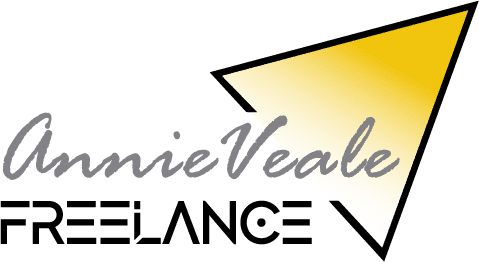Where to start with your SEO project
Planning a content SEO project requires a comprehensive approach to ensure that the content is optimized for search engines and meets the needs of the target audience. Before starting an SEO content project I would suggest a website audit. In addition to plan time to re-fresh your persona brand and profiling research and to identify any pain-points that may exist from the customer/user perspective. This information should allow you to create a content marketing plan.
It can also be a frustration to many content marketers, but the fact is that you should ensure that the technical state of your site should be investigated and any fixes, issues or technical optimisation of code and files should be completed prior to any major new content additions or strategies.
Technical optimization involves optimizing the technical aspects of your website, such as the site structure, crawlability, and page speed, to ensure that search engines can easily crawl and index your content.
Research and Analysis before starting
The preparation required for a content marketing plan and project can be broken down into several key steps:
Keyword research: This involves identifying the keywords and phrases that your target audience is searching for and determining their relevance to your business.
Target audience analysis: This involves understanding the demographics, interests, and needs of your target audience to create content that resonates with them.
Competitor analysis: This involves analyzing the content and SEO strategies of your competitors to understand what they are doing right and what you can do differently.
I would strongly recommend looking at the competitors in two main categories – those that are identifiable as the closest digital competition and those that are the businesses closest competition, you will often find these are different, and whilst you may have enjoyed strong growth in recent periods, built upon heritage or market leader status, the digital landscape has evolved significantly and even if you don’t find yourself regularly pitching against these digital businesses, you will, if nothing else, be able to benchmark and gain competitive insight into their content, keywords and backlinks.
Establishing your
Content Strategy for SEO
Content strategy: This involves developing a content marketing plan for creating and publishing content that is optimized for search engines and appeals to your target audience. This includes determining the types of content, frequency of publication, and distribution channels.
On-page optimisation: This involves optimizing individual pages of your website for search engines by using keywords, meta descriptions, header tags, and other elements.
Off-page optimisation, can essentially be defined as backlinks work, guest posting and shoring-up your social signals. This should be closely aligned to your main campaigns and will likely require you to evaluate your calls to action, landing pages and any form of lead generation that you utilise.
How to start evaluating your Content
The SEO colour wheel theory is a technique that I have developed to assist my clients in visualising the extent of content creation required and the relationship each piece of content has in relation to the website structure, pages and business activities. I would suggest this be a useful tool for any Marketing Manager or Content Manager. Essentially allowing you to create a content marketing plan for the purposes of communicating with the board and visualising the state of play and strategy on the content side and how this relates to the business and marketing campaigns. I would also suggest that it is useful to identify where to focus most of your optimisation efforts whilst also being an invaluable project planning tool allowing you to keep track of progress.

More information about how to complete your SEO colour wheel implementation can be found on youtube.
How to complete your Content Colour Wheel
It requires some degree of knowledge on SEO for it to be fully implemented.
I would suggest this be a good model for those of mid-weight expertise or those involved in project management of SEO and also Content marketing specialists.
Focus on one segment at a time working round to complete the wheel.
The media segment is to house your most visually sharable content, PR articles, videos, graphics and images and poscasts.
First, identify 5-6 of the categories that form the inner circle of content/psychology – for example
Brand – Brand ethos, team and culture core pages.
Product – eCommerce product pages, main services offered, product range.
Application – the product in action, case studies, examples, tutorials.
Emotion – the emotion of purchase – do people purchase to feel good, to be safe or for environmental persuasions?
Presentation – the media, your videos, podcasts, photos, infographics, social etc.
Then follow these steps:
-
Make a list of your existing core pages and landing pages – those that you are most interested in people landing on –most likely, very pertinent to your business activities and offers.
-
Go around the outside of the wheel and place those pages, in a box on the outer segment of the wheel – each category should have at least three pages per outer section.
-
Make a list of your top performing micro-topics – those that receive the greatest organic traffic and are breakout topics – for example, you may find it is a page with specialist knowledge on a product or a generic page about a local event you and your team attended.
- Similarly, place these pages in the appropriate topic segment on the innermost section of the wheel – the grey section in the diagram.
At this point, you should have a very clear indication of the categories that you are lighter on or those that you have excess content for.
- The pages that you have listed and yet not been able to place in either the outer or inner segments are key pages to improve traffic to both the inner micro topics and outer – volume landing pages. These should sit in the middle segment, adjoining and linking inner to outer pages. You may well find that this section of your site does not exist at all and that your list has already been placed within the inner or outer circle.
The process above has now provided you with an identification criteria as to what your next SEO priorties should be.
Scenario 1. – Vast number of pages listed, yet not placed within the diagram.
This scenario suggests that it may be time to add new categories of topic and content to your site. It may also indicate that cannibalisation is a problem for your pages – essentially this means you have several pages competing against themselves on search queries. You should consider booking an SEO website audit to fully examine the site and traffic.
Why do this?
There are two reasons – the first is that these pages will produce the most powerful internal links and in turn, if you link to the most important outer page from multiple specialist or micro topics, the individual keywords for each page will be bolstered, and when completed you will get increased chance of SERPS features and sitelinks, for example, returning on the outer/landing page as a result of this work.
Scenario 2. – Large gaps in the content colour wheel and no lists of site pages to complete these gaps.
This situation is likely an indication that your site is too thin on content. You should set about a content writing strategy and look at hiring content writers to assist the creation of the content. You should start this process with detailed keyword analysis and look to create additional pages with strong content and media that can be placed within you innner categories. If you are looking to find content writers I would suggest taking a look at this new site – build-links.CLUB currently offering free codes for opening an account and advertising for specific content.
Why do this?
Your site completeness, and likely, the logic and depth for you to rank highly will not exist in great enough quantity, you will likely see sporadic or even broken positions in your search performance charts and although you may have good keywords and pages indexed the majority will likely be in positions of around 40 or even higher. See case study diagram.
Scenario 3. – a balanced content colour wheel chart – with most categories populated and few pages listed and not placed.
This final scenario indicates that you have been doing a great job on the content – well done! Your next steps are to go through and identify what your main objectives are from this SEO project – are you surprised to find pages not indexed in the SERPs or perhaps you are examining whether the traffic to your site is mis-matched and consequently you are observing low engagement levels?
Why do this?
The content colour wheel clearly visualises the main topic and content areas, you are ready for the next level in SEO whereby focus is required on internal links, outreach and backlinks, schema and building out SERPS features, if you are in a position of having great content yet not achieving the rankings you were hoping for it could be a mix of technical SEO and specialist on-page and off-page SEO required. The full extent of which can also be further pin-pointed through an SEO audit.
Measuring and tracking: This involves using analytics tools to measure the success of your SEO efforts and track the performance of your content over time. There are many SEO tools available to monitor these key performance and traffic engagement metrics. The cost of these tools is significant and does require a proficient ability with data as well as familiarity with the platforms in order to create the reports and make the correct conclusions. These tools can be expensive and often this area of reporting is outsourced to a specialist in SEO or agency.
By following these steps, you can ensure that your content SEO project is well-prepared and executed effectively, helping you to achieve your goals and drive more organic traffic to your website.
If you would prefer to outsource this content strategy and analysis please get in contact to arrange a discussion or request a quote and key deliverables.
For information on the different types of SEO and the work involved – you may want to take a look at this article.

